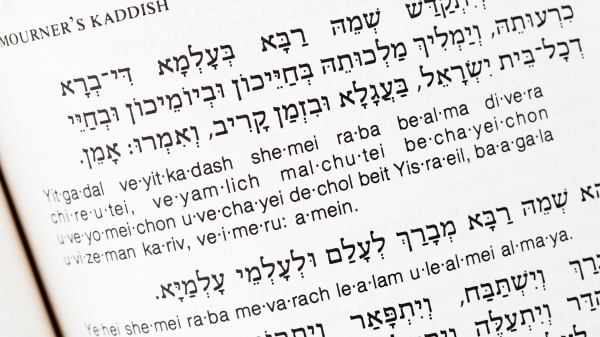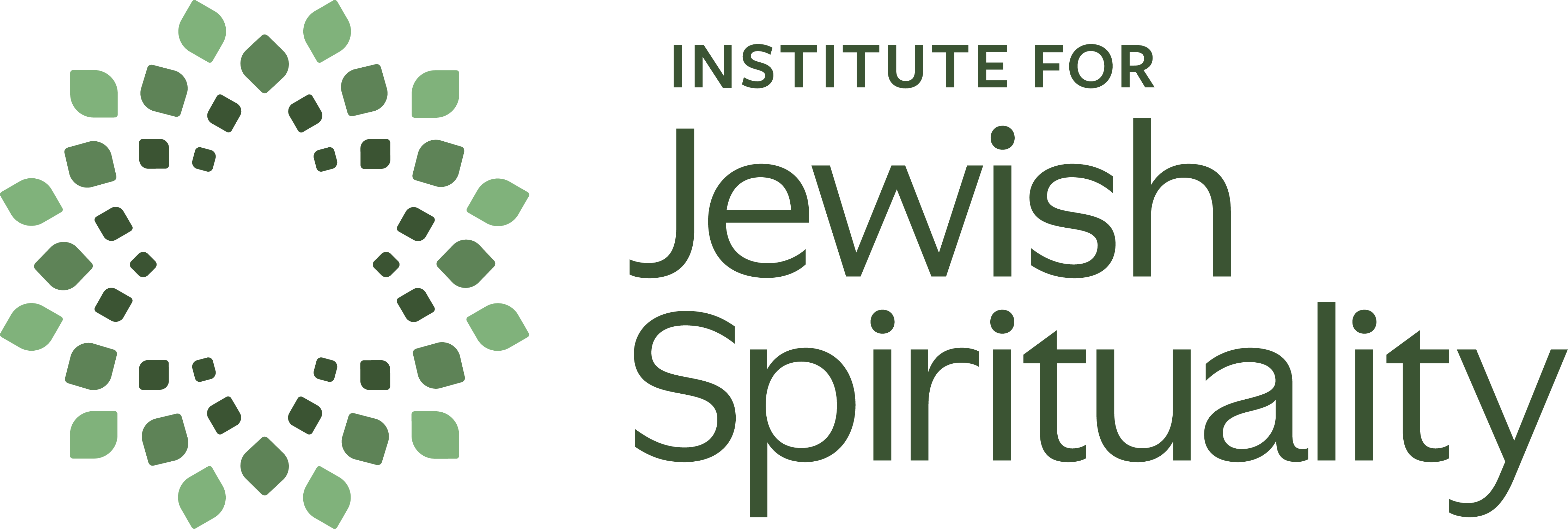
On the Daily Sit Kaddish and the Persistent Sound of Jewish Community
Every weekday, the Institute for Jewish Spirituality brings together a hundreds-strong community for half an hour of Jewish meditation on Zoom, called the Daily Sit. This summer, as an intern at IJS, I held the tech space for these Daily Sits. Each Daily Sit offers many powerful teachings, but the practice that has most stayed in my heart is the Mourner’s Kaddish prayer, which marks the close of each IJS meditation.
Rabbis in the 13th century originally recited the Aramaic text of the Kaddish to conclude sessions of Torah learning. IJS likewise closes each Daily Sit by inviting mourners and those who wish to join them to unmute themselves and chant the Kaddish line by line, to which the community’s hundreds of voices chant back, “Amen.” A special sound rises from the conglomeration of these multiple individual Kaddishes. Voices pour in from across the United States and beyond, singing the same words in different accents, rhythms, and registers. The voices of the community overlap and stagger out of sync as names of dearly missed loved ones fill the Zoom chatbox. The voices pass over and under one another in a tapestry of Aramaic words and human lives, all punctuated by amens. An outside listener might describe the sound as a cacophony, but musicologists call this kind of sound “heterophony,” the texture of multiple voices singing variations of the same melodic line all at once. It is a unique sound, and one might assume that this heterophony is just an artifact of the new Zoom medium, where it’s not yet possible to be totally together in time.
As such, when I heard the heterophonic Zoom Kaddish at the end of my first Daily Sit, I was surprised to find the sound familiar and even nostalgic—in fact, it brought back forgotten memories. In the Modern Orthodox synagogue of my childhood, while most of the prayer service was led by the prayer leader or sung by the whole community simultaneously, the Mourner’s Kaddish was unique. This prayer was led by a few individuals spread out across the sanctuary: just those members of the community who were in mourning on that given day. Different mourners chanted the Kaddish at different paces, and the sound of this prayer—scattered voices, communal amens, and all—became one of layered heterophony. I had always assumed that this lack of unison was simply an uncomfortable side effect of the fact that Mourner’s Kaddish was led by multiple laypeople and not by one central leader. However, hearing the IJS Kaddish at the Daily Sit made me wonder if the unique sound of this age-old practice had a meaning of its own.
At the height of the pandemic, I sometimes walked past my synagogue’s padlocked doors and searched in the windows for the light of the eternal lamp burning inside. I wondered when Jewish practice and community would return, and what it would look like in a changed world.
The Daily Sit itself was conceived as a response to the isolation of the pandemic, though it has now outgrown the circumstances of its creation.
From my perspective, as communities begin to look and function radically differently than they did in centuries past, the heterophony of Mourner’s Kaddish carries onward the comfort and complexity of the Jewish collective. No one person can carry all of a community’s loss or its connection to the world of yesterday. Rather, each community member chants in their time, leading the collective with personality and vulnerability. This is the heterophony of the Mourner’s Kaddish. We each draw close to and away from grief, losing and rebuilding our complicated relationships with those who came before us. Community means that when our time comes to mourn, we will be met with staggered amens and when we pass, scattered voices will rise in our memory. I’m grateful to have joined the Daily Sit community this summer as one of many voices chanting out overlapping amens.
Hear the Daily Sit Mourner's Kaddish
Max Bamberger was an Intern at IJS this past summer. He is currently a junior at Yale University, majoring in Film and Media Studies.
